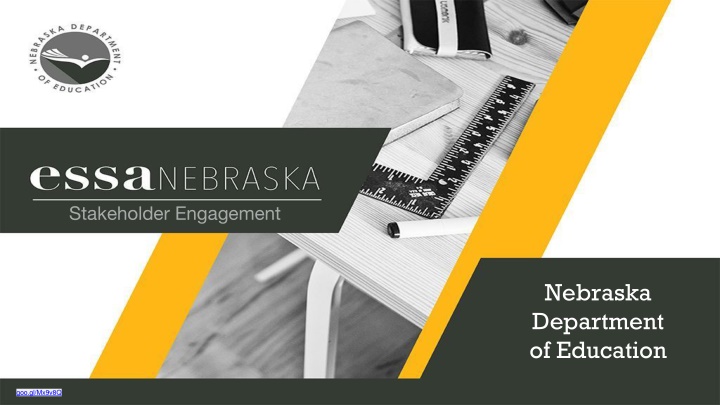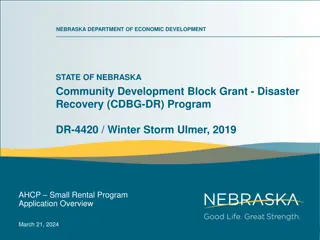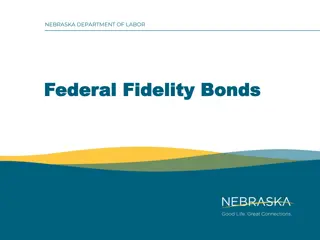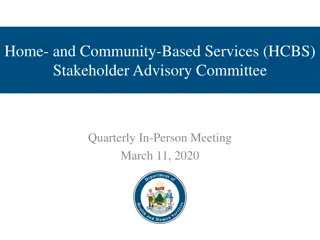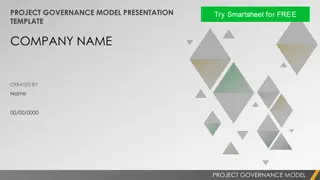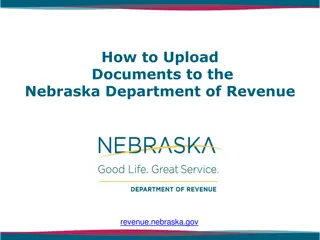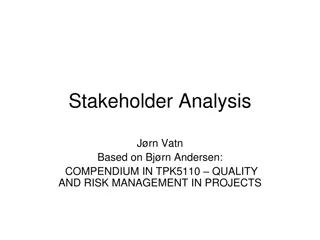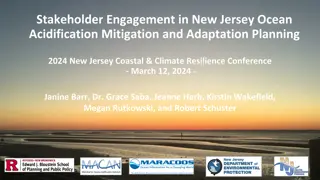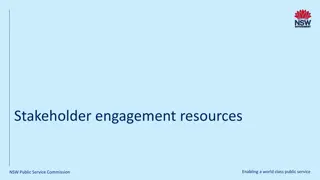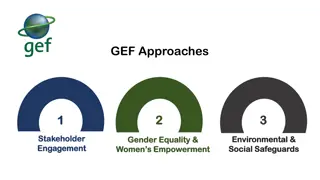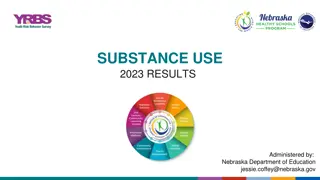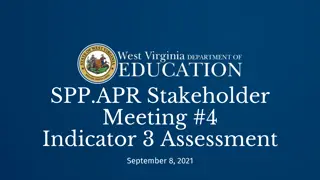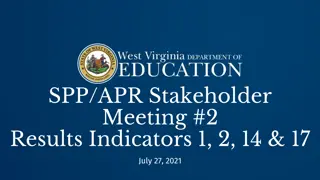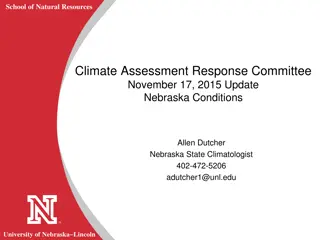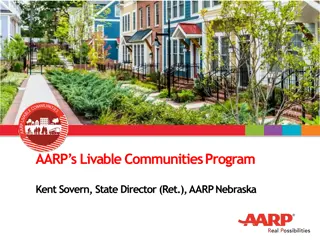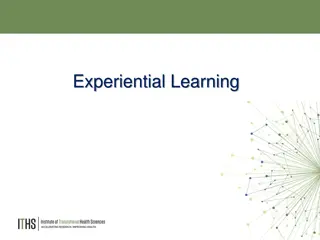Overview of Stakeholder Engagement in Nebraska Department of Education
The stakeholder engagement efforts by the Nebraska Department of Education aim to build understanding of the Every Student Succeeds Act (ESSA) and create ongoing dialogue for authentic engagement. The focus is on creating a professional learning network and fulfilling ESSA requirements. The history and evolution of ESSA, along with the strategic plan guiding education priorities in Nebraska, are also highlighted.
Download Presentation

Please find below an Image/Link to download the presentation.
The content on the website is provided AS IS for your information and personal use only. It may not be sold, licensed, or shared on other websites without obtaining consent from the author.If you encounter any issues during the download, it is possible that the publisher has removed the file from their server.
You are allowed to download the files provided on this website for personal or commercial use, subject to the condition that they are used lawfully. All files are the property of their respective owners.
The content on the website is provided AS IS for your information and personal use only. It may not be sold, licensed, or shared on other websites without obtaining consent from the author.
E N D
Presentation Transcript
Stakeholder Engagement Nebraska Department of Education goo.gl/Mx9v8Q
Meeting Procedures Facilitator and Recorder Table norms Parking lot commentary Countdown to attention Start and end time observed
Stakeholder Engagement: Stakeholder Engagement: Objectives and Timeline Objectives and Timeline Build common understanding of the Every Student Succeeds Act (ESSA) Create opportunity for ongoing dialog for authentic engagement Build a professional learning network Fulfill requirements of ESSA Submit Nebraska State ESSA Plan September 18, 2017 Continued Stakeholder Engagement April August Sept March May July
Overview and History Signed into law in 1965 as Elementary and Secondary Education Act (ESEA) by Lyndon Baines Johnson. As an extension of The War on Poverty, ESEA remains one of the most significant investments in education by the federal government. Designed to supplement services and support for those students most at-risk and historically underserved. ESEA is a civil rights law.
Overview and History Every Student Succeeds Act (ESSA) replaces No Child Left Behind as the latest reauthorization ESEA. Provides greater opportunity for state and local input in state consolidated plans.
Strategic Plan Nebraska Department of Education Strategic Plan Guides the work and priorities for education in Nebraska for the next ten years Outlines goals, objectives, strategies, and activities Alignment between AQuESTT and Strategic Plan
Accountability AQuESTT: Accountability for a Quality Education System, Today and Tomorrow
Advancing Equity Continuous School Improvement Well-Rounded Education Effective Educators Supporting All Students Supporting Excellent Educators Accountability, Support, and Improvement for Schools Title I & III Title II Title IV
Advancing Equity Continuous School Improvement Well-Rounded Education Effective Educators Supporting All Students Supporting Excellent Educators Accountability, Support, and Improvement for Schools Title I & III Title II Title IV
Final Classfication Definitions STATUS STATUS - - is calculated by averaging NeSA assessment scores across all available grade levels and subjects is calculated by averaging NeSA assessment scores across all available grade levels and subjects for the current year. This average will earn an initial score of 1, 2, 3, or 4. Some schools with a small number of for the current year. This average will earn an initial score of 1, 2, 3, or 4. Some schools with a small number of eligible assessment scores will have their district s Status score substitute as their school Status score. eligible assessment scores will have their district s Status score substitute as their school Status score. IMPROVEMENT IMPROVEMENT - - is based on a school/district s average NeSA assessment scores over the last three years. If is based on a school/district s average NeSA assessment scores over the last three years. If there is an upward trend of a certain amount, then the raw classification will be increased by one level, there is an upward trend of a certain amount, then the raw classification will be increased by one level, regardless of Status. regardless of Status. GROWTH GROWTH - - is based on the percentage of students at a school/district who were present for the full year and is based on the percentage of students at a school/district who were present for the full year and showed growth on their individual NeSA reading or math scores compared to a year ago (see the AQuESTT showed growth on their individual NeSA reading or math scores compared to a year ago (see the AQuESTT Classification Rules document for full details). If a certain percentage of students show growth, then the raw Classification Rules document for full details). If a certain percentage of students show growth, then the raw classification will be increased by one level. classification will be increased by one level. Having a low Having a low GRADUATION RATE GRADUATION RATE at a high school/district can limit the raw classification to a 3, 2, or 1. If the at a high school/district can limit the raw classification to a 3, 2, or 1. If the graduation rate is high enough (or not applicable), then there is no effect. The graduation rate is calculated graduation rate is high enough (or not applicable), then there is no effect. The graduation rate is calculated using the corrected cohort data, and therefore lags a year behind the NeSA data. using the corrected cohort data, and therefore lags a year behind the NeSA data. NON NON- -PROFICIENCY PROFICIENCY - - is based on the percentage of NeSA assessment scores at a school/district that were is based on the percentage of NeSA assessment scores at a school/district that were rated as non rated as non- -proficient over the last three years. If there is an upward trend of a certain amount (more non proficient over the last three years. If there is an upward trend of a certain amount (more non- - proficient scores) then the raw classification will be decreased by one level, while if there is a downward trend of proficient scores) then the raw classification will be decreased by one level, while if there is a downward trend of a certain amount (less non a certain amount (less non- -proficient scores), then the raw classification will be increased by one level. proficient scores), then the raw classification will be increased by one level.
Final Classification Definitions Having a low Having a low PARTICIPATION RATE PARTICIPATION RATE for NeSA assessments at a school/district can lower the raw for NeSA assessments at a school/district can lower the raw classification by one, two, or three levels. classification by one, two, or three levels. The RAW CLASSIFICATION combines STATUS with any adjustments or limitations earned in the previous The RAW CLASSIFICATION combines STATUS with any adjustments or limitations earned in the previous five categories. The possible classifications are 1 (Needs Improvement), 2 (Good), 3 (Great), or 4 (Excellent). five categories. The possible classifications are 1 (Needs Improvement), 2 (Good), 3 (Great), or 4 (Excellent). (2015 only) The Total Evidence Based Analysis (EBA Score) is a sum of the responses to each of the five (2015 only) The Total Evidence Based Analysis (EBA Score) is a sum of the responses to each of the five policies, practices, and procedures questions given for each of the six AQuESTT tenets. If the Total EBA policies, practices, and procedures questions given for each of the six AQuESTT tenets. If the Total EBA Score meets or exceeds a certain percentile, the raw classification is increased by one level. This EBA Score meets or exceeds a certain percentile, the raw classification is increased by one level. This EBA adjustment only applies to school classifications. adjustment only applies to school classifications. (2015 only) The Final Classification is a school/district s overall AQuESTT classification; it combines the raw (2015 only) The Final Classification is a school/district s overall AQuESTT classification; it combines the raw classification generated above with a potential adjustment due to the Evidence classification generated above with a potential adjustment due to the Evidence- -Based Analysis responses for the school/district. for the school/district. Based Analysis responses For more details about the rules and calculations used in the 2016 AQuESTT Performance Progress For more details about the rules and calculations used in the 2016 AQuESTT Performance Progress Report, please refer to the AQuESTT Final Classification Business Rules document found next to the 2016 Report, please refer to the AQuESTT Final Classification Business Rules document found next to the 2016 Performance Progress Report link, or at AQuESTT.com Performance Progress Report link, or at AQuESTT.com
Additional Indicator AQuESTT Classification English Language Proficiency Participation Improvement S ? ? I Gr G P E Status Growth Graduation Rate
Additional Indicator Of all the discussion, decide on two ideas for additional non-academic indicator to write on poster paper Place poster paper on the back wall Two Minutes
Advancing Equity Continuous School Improvement Well-Rounded Education Effective Educators Supporting All Students Supporting Excellent Educators Accountability, Support, and Improvement for Schools Title I & III Title II Title IV
Qualities of Effective Educators Qualities of Effective Educators
Qualities of Effective Educators Qualities of Effective Educators What should be added? What should be removed? What should be adjusted/clarified? 5 Minute Countdown Timer For the HD version with beep go to: http://www.youtube.com/watch?v=LY6h3pkdsro Possibly the easiest timer you'll ever use. Big easy to see numbers. Voted #1 by timer-timer.com - that's us :) http://timer-timer.com. For a version that beeps when it reaches 0 see link above.
Qualities of Effective Educators Qualities of Effective Educators How should we focus state-level funds to ensure maximum impact on educator effectiveness? (Title II-A) 10 Minute Countdown Timer Possibly the easiest timer you'll ever use. Big easy to see numbers. Beeps when it reaches 0. Voted #1 by timer-timer.com - that's us :) http://timer-timer.com
Advancing Equity Continuous School Improvement Well-Rounded Education Effective Educators Supporting All Students Supporting Excellent Educators Accountability, Support, and Improvement for Schools Title I & III Title II Title IV
Well-Rounded Education 10 Minute Countdown Timer Possibly the easiest timer you'll ever use. Big easy to see numbers. Beeps when it reaches 0. Voted #1 by timer-timer.com - that's us :) http://timer-timer.com
Well-Rounded Education What is still needed? What is already in place? 10 Minute Countdown Timer Possibly the easiest timer you'll ever use. Big easy to see numbers. Beeps when it reaches 0. Voted #1 by timer-timer.com - that's us :) http://timer-timer.com
Advancing Equity Continuous School Improvement Well-Rounded Education Effective Educators Supporting All Students Supporting Excellent Educators Accountability, Support, and Improvement for Schools Title I & III Title II Title IV
Thank You! Please complete the evaluation to help us improve this process.
